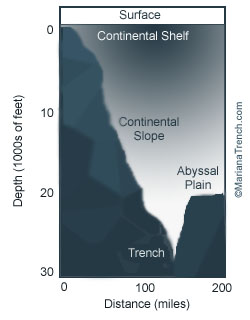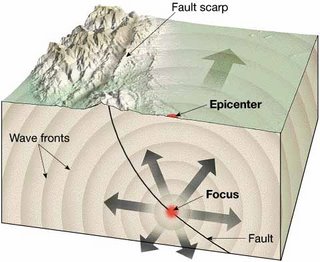
Have I told you how much I love astronomy. I think that the expanse of space is spectacular. We are so small and tiny compared to what is all out there, and to think how much smaller molecules or even atoms, (or even the quarks that make up the atoms for that
matter, no pun intended) they are compared to us. How big is the Earth? Well, if you were going the speed of light, which is 300,000,000 meters in one second, you could travel around the earth a little over seven times in one second. Light traveling from the sun to the Earth takes about eight minutes. That's quite the distance. Jupiter's orbit is about 5 times the diameter of Earth's orbit around the sun. Now, that you have a sense of scale, check out the size of that star in the picture (ignore the "click to enlarge"). That is a picture of Betelguese, a red giant star in the constalation Orion. The diameter of the star nearly exceeds the diameter of Jupiter's
orbit around the sun. WOW and I mean WOW! It amazes me how big things are out there, and that is only one star out of billions in our galaxy. Feeling small and insignifigant yet? Me too.
 This week I'll be heading out to do more research with Dr. Dinklage, this time out in the Pequop Mountains in Nevada. We will be working with more metamorphic rocks. One characteristic that some metamorphic rock may contain is foliation and lineation. They are defined as follows: Foliation - The arrangement of a set of minerals in parallel, sheet-like layers that lie perpendicular to the flattened plane of a rock. Occurs in metamorphic rocks on which directed pressure has been exerted. Lineation - Minerals that are linear or have been positioned or deformed in the same direction due to stress and strain. These characteristics occur because tremendous amounts of force deform the rocks during an orogeny, or mountain building. Heat and pressure are what determine how a rock will deform. It could become low grade (little metamorphism) to high grade (great metamorphism).
This week I'll be heading out to do more research with Dr. Dinklage, this time out in the Pequop Mountains in Nevada. We will be working with more metamorphic rocks. One characteristic that some metamorphic rock may contain is foliation and lineation. They are defined as follows: Foliation - The arrangement of a set of minerals in parallel, sheet-like layers that lie perpendicular to the flattened plane of a rock. Occurs in metamorphic rocks on which directed pressure has been exerted. Lineation - Minerals that are linear or have been positioned or deformed in the same direction due to stress and strain. These characteristics occur because tremendous amounts of force deform the rocks during an orogeny, or mountain building. Heat and pressure are what determine how a rock will deform. It could become low grade (little metamorphism) to high grade (great metamorphism).














